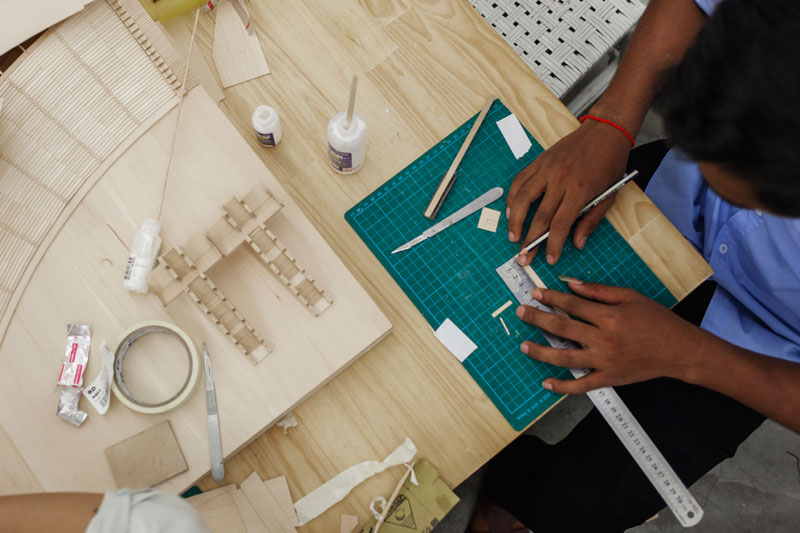Following months of painstaking efforts to document and build models of the works of one of Cambodia’s greatest architects, the Vann Molyvann Project concludes its summer school with a reception Saturday evening.
The project was started in 2009 by Canadian architect Bill Greaves with the goal of archiving the disappearing work of Mr. Molyvann—the foremost exponent of the New Khmer Architecture movement of the 1950s and 1960s.

Project coordinator Pen Sereypagna explained that the work documenting Mr. Molyvann’s creations—the architectural plans of which were almost completely destroyed during the tumult of the 1970s—helped bridge the gap between generations of Cambodian architects.
“We cannot close our eyes about the past,” he said. “As Vann Molyvann once said, ‘You have to learn from the past to move forward.’”
Mr. Sereypagna added that just as Mr. Molyvann had combined modernist aesthetics with influences from Angkor and the vernacular of traditional village homes to create a distinct architectural style, contemporary Cambodian architects needed to draw inspiration from the master.
“If we don’t learn from the past, we just copy from the West, from foreigners—you know, copy and paste—like you see nowadays. There is no history involved,” he said.
Bent over a 1/200th scale basswood model of Phnom Penh’s Olympic Stadium—a focus of this year’s summer school, funded by the U.S. Embassy and Parsons The New School of Design in New York—local architect Sun Pora said what he respected most about Mr. Molyvann and his counterparts’ work was its uniquely Cambodian character.
“The importance is that they showed identity, [which is] very important for one country,” Mr. Pora said. “For example, the Institute of Foreign Languages, it shows a lot of Khmer identity. We are reminded of the temple, and the water around the building looks like water at Angkor Wat.”
Mr. Pora said volunteers had used survey information and photographs to recreate 2-D architectural drawings of Mr. Molyvann’s structures with AutoCAD software before putting together the models. They have also collected oral histories from inhabitants of his buildings.
Art historian Darryl Collins, co-author of “Building Cambodia: New Khmer Architecture 1953-1970,” said that Mr. Molyvann was deserving of such a detailed retrospective.
“To achieve what Vann Molyvann achieved is singular,” he said. “I don’t see another architect of this caliber and…quality and quantity of work. The quality never dropped.”
(Additional reporting by Aun Chhengpor)



